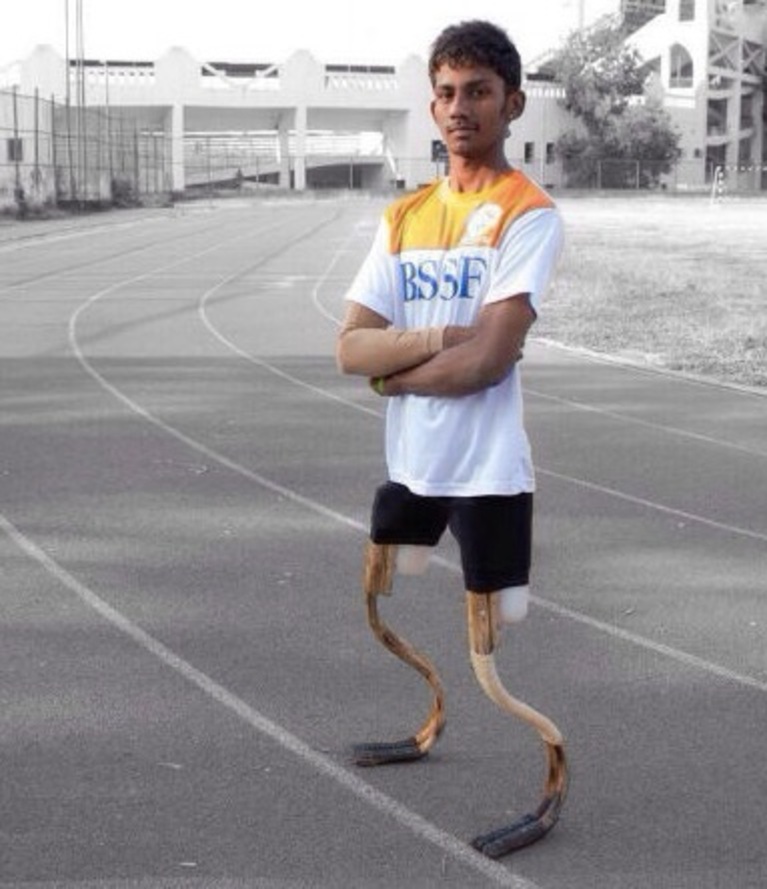Rise Legs: affordable prosthetics in Bangalore
Dec 20, 2015
At Rise Legs in Bangalore, India, artificial legs are custom made for amputees using low-cost cane. Here, a fabricator bends and shapes the cane in a curve.
Olin ‘17 student Kelly Brennan took a leave of absence in fall 2015 to intern at Ayzh, a women’s health advocacy group in Chennai, India. While there, she also conducted some independent lab research on prosthetics fabrication in Bangalore. This report is about her visit to Rise Legs in Bangalore.
The curved foot extends from the lower leg, sticks of cane bound together.
Coming soon is a record of her conversation with entrepreneur Arun Cherian about how and why he makes the lower leg limbs he does, the material and fabrication choices and methods, and more.
See below some images from the fabrication process that Kelly shot while there. The legs are made from local cane trees, a renewable resource and commonly used material for furniture in India. Cane has both rigid strength and springiness—it gives a it when you put your weight on it. Cherian noticed that high tech prosthetic limbs, like the C-leg, were made to achieve this spring quality, so he decided to pursue a much more accessible and affordable version.
The bundles of cane are bound together.
A close up of four stalks of cane, bundled to become a provisional leg.
Cane is bent with heat to create and hold its curves.
The assembled foot and leg have spring action and a sturdy structure.
A side view of the finished foot, with a graceful ankle curve.

An athlete wears two Rise Legs, standing upright.